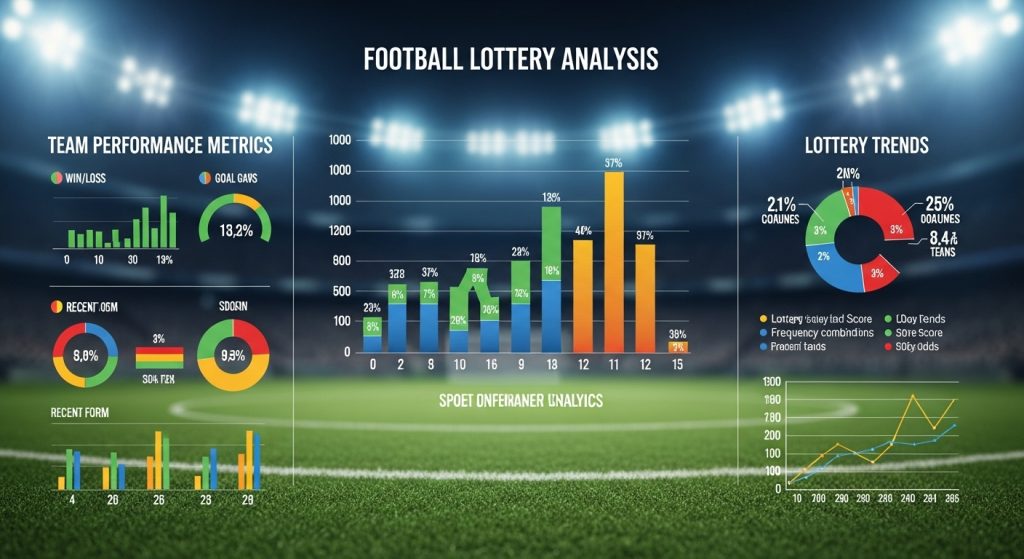
1. Introduction
Lottery analysis refers to the systematic study of number patterns, statistical probabilities, and behavioral trends in games of chance. While the lottery is fundamentally random, analysis helps reveal underlying structures in how numbers are drawn, how players select combinations, and how distributions evolve over time.
The goal of such analysis is not to predict outcomes — which remain governed by probability — but to understand frequency, clustering, and human decision-making related to random events. This combination of mathematics and psychology makes lottery analysis both a statistical and social study.
2. Understanding Randomness
At its core, every legitimate lottery operates on the principle of randomness. Each number or combination has an equal probability of being drawn, and previous outcomes do not influence future results. However, randomness often produces patterns that appear non-random — such as streaks, repeats, or number clusters.
Lottery analysis seeks to quantify these phenomena using probability distributions and large-sample observation. Over time, results tend toward uniform distribution, yet temporary imbalances occur naturally and attract analytical attention.
3. Statistical Framework
Lottery analysis relies on foundational statistical tools, including:
- Probability Theory: Determines the likelihood of a specific number or combination appearing in a draw.
- Combinatorics: Calculates the total number of possible combinations, forming the mathematical backbone of lottery systems.
- Frequency Analysis: Tracks how often specific numbers are drawn within a given dataset.
- Chi-Square Distribution Tests: Measures how observed outcomes deviate from expected uniform randomness.
- Entropy Measurement: Assesses the level of unpredictability in the sequence of results.
Together, these methods allow analysts to evaluate whether the draw mechanism is functioning fairly and within expected probabilistic limits.
4. Pattern Recognition and Frequency Trends
Though the lottery is designed to be random, pattern recognition remains a major focus for researchers and enthusiasts.
- Hot Numbers: Frequently drawn numbers within a defined period.
- Cold Numbers: Rarely drawn numbers, often believed (incorrectly) to be “due.”
- Repetition Analysis: The rate at which previous winning numbers reappear.
- Gap Studies: The average number of draws between repeats.
While these analyses can be statistically interesting, they do not confer predictive advantage. They are, however, valuable for verifying randomness integrity and identifying mechanical or procedural biases in lottery systems.
5. Human Behavior and Selection Bias
A significant component of lottery analysis involves the psychology of player choice.
Most players do not choose numbers randomly; they select birthdays, anniversaries, or repeating sequences. This creates predictable clustering around lower numbers (1–31) and symmetrical patterns.
Analysts studying player data can detect these tendencies, revealing how human behavior distorts probability distribution among ticket selections.
In practice, this means that some combinations — though equally likely to win — are far more likely to be shared among multiple winners because of common human habits.
6. Probability of Winning
Understanding the true odds of winning a lottery requires an appreciation of combinatorial mathematics.
For example, in a 6/49 lottery (six numbers drawn from 49), the total number of possible combinations is:
C(49,6) = 13,983,816
Thus, the chance of selecting the exact winning combination is roughly 1 in 13.98 million.
These extremely small probabilities explain why consistent winning through pattern selection or strategy is mathematically impossible. Nonetheless, lottery analysis remains valuable for studying fairness, randomness, and system design.
7. Computational Simulation
Modern analysts use computational models to simulate millions of draws, comparing simulated results with historical data to assess the consistency of randomness.
Monte Carlo simulations, for instance, generate pseudo-random draws that mimic real-world lotteries. By comparing these simulations to actual results, researchers can identify anomalies, mechanical irregularities, or systemic biases.
Such methods also allow testing of “what-if” scenarios — for instance, how jackpot probability changes with number pool expansion or multi-draw systems.
8. Predictive Modelling and Misconceptions
Despite the popularity of predictive algorithms, no statistical model can accurately forecast lottery outcomes. Random draws lack correlation, meaning past events do not influence future ones.
However, predictive modeling in lottery analysis still serves useful purposes — such as identifying apparent non-randomness, verifying machine integrity, or detecting potential tampering.
Advanced models use data clustering, entropy evaluation, and regression to monitor whether a lottery’s randomness behaves within expected probabilistic parameters.
9. Economic and Sociological Dimensions
Beyond numbers, lottery analysis extends to the study of economic behavior and social impact.
Lotteries generate significant public revenue, yet their demographic patterns often show disproportionate participation from lower-income groups. Analysts study this phenomenon to evaluate its socioeconomic implications and policy outcomes.
Historical data also reveals that economic downturns correlate with increased lottery participation, suggesting that many view it as an accessible — albeit irrational — opportunity for financial transformation.
10. Fairness and Security Testing
Governments and lottery organizations use statistical analysis to ensure the fairness of draws.
By continuously monitoring draw outcomes, analysts can detect irregularities such as number bias, timing anomalies, or non-random clustering that might suggest human interference or equipment malfunction.
Blockchain-based systems are now being explored to further guarantee transparency by publicly recording draw results in immutable digital ledgers, reducing the possibility of fraud.
11. Visualization and Communication of Results
Data visualization plays a crucial role in communicating complex statistical information.
Charts, heat maps, and trend lines illustrate number frequency, draw patterns, and long-term randomness balance.
Well-designed visual dashboards allow analysts, regulators, and even casual players to grasp probability dynamics quickly.
These tools transform abstract mathematics into clear, interpretable visuals that enhance understanding and promote transparency.
12. Historical and Comparative Analysis
Long-term datasets allow analysts to compare lottery systems across regions and decades.
Patterns such as number distribution consistency, jackpot growth, and prize structure evolution reveal how lotteries adapt to maintain engagement.
Some systems introduce additional draws or bonus numbers to alter odds and increase excitement, while others focus on ensuring fairness through algorithmic audits.
Historical comparison emphasizes how technological and cultural factors shape the public perception of randomness and luck.
13. Ethical Considerations
The analysis of lottery systems also raises ethical questions.
Should governments promote an activity driven by improbable odds? How transparent should data analytics be to the public?
Analysts often advocate for responsible gaming education, emphasizing that understanding the mathematics of the lottery should discourage unrealistic expectations while promoting awareness of probability.
Ethical analysis ensures that data-driven insights serve public interest rather than manipulation or exploitation.
14. Future of Lottery Analysis
As technology evolves, so too will the methods of analysis. Artificial intelligence, blockchain verification, and quantum random number generators are reshaping the landscape of fairness and transparency.
Future analysts will combine mathematics, computer science, and behavioral economics to develop comprehensive models that not only verify randomness but also understand why people continue to play against overwhelming odds.
In this future, lottery analysis will serve not as a tool for prediction, but as a reflection of human hope, probability theory, and digital accountability.
15. Conclusion
Lottery analysis represents the intersection of chance, mathematics, and human psychology. While no study can overcome the laws of probability, analytical understanding provides clarity about how lotteries function — and why they continue to captivate societies worldwide.
By quantifying randomness, monitoring fairness, and exploring behavioral trends, analysts turn a game of luck into a field of structured insight.
Ultimately, lottery analysis is less about finding a winning formula and more about uncovering the fascinating relationship between numbers, systems, and the human desire to challenge probability itself.





